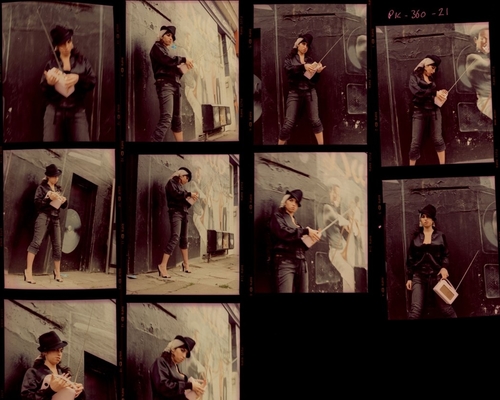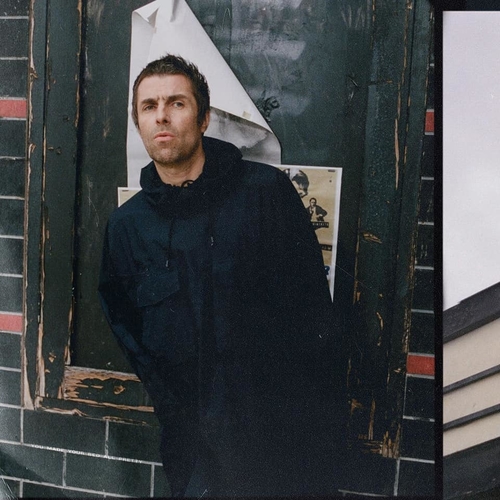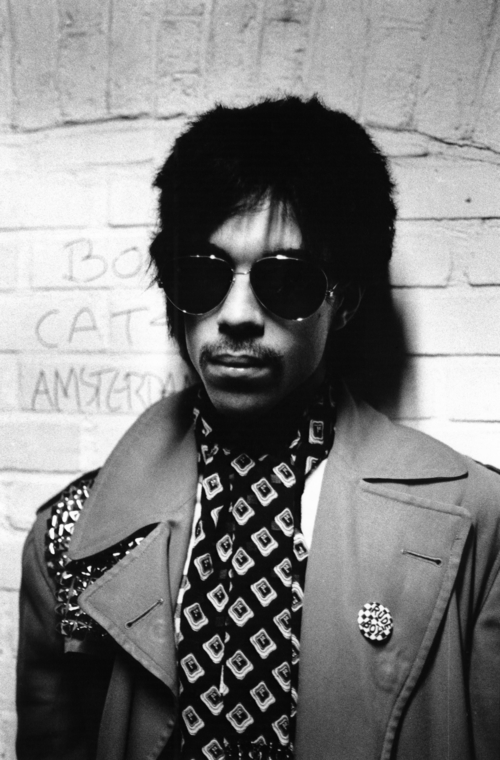FEATURE:
Spotlight
Stealing Sheep
_________
I still maintain modern music…
is more concerned with making us reach for the tissues than it is making us feel alive and free. I am not down on all artists but there is a lot of heavy music about right now. Whether it is the bearded songwriters strumming away their heartache or the more vibrant Pop artists revealing their hurt with synths and machinery buzzing in the background – there is a lot of grief and bummer-vibes working away. That is fine if you need catharsis and a sense of release but, for those who want to get moving and feel a bit happier, there are fewer options. To be fair, Stealing Sheep do bring some weighty subjects into the fold but they always top it off a glisten and shine that makes you smile and gets you singing along. Before I come to their latest album and the reaction that is garnering, it is probably worth introducing the band. More accurately, I shall let Heavenly Recordings introduce them:
“Rebecca Hawley - Vocals and synthesisers
Emily Lansley - Vocals, keyboards, electric guitar and bass guitar
Lucy Mercer - Vocals, drum machines, percussion and acoustic drum kit
Stealing Sheep are an electro pop band from Liverpool, England, who formed in 2010.
The debut studio album ‘Into the Diamond Sun’ was released in 2012 by Heavenly Recordings
The band’s second album, ‘Not Real’, was released in the spring of 2015.
The band return with their third record, ‘Big Wows’ on Friday 19th April, 2018.
“Big Wows is heavier, harder and weirder than Stealing Sheep’s previous work. Bold neon pop songs with rave percussion, steelpans, dreamy segues and breathy experiments. The *fsszzt* sound of lemonade opens the album with a hyper-real sense of optimism that progressively reveals the cracks of dystopian irony amidst sugar–coated pop; held together by Emily Lansley’s bass guitar, Luciana Mercer’s drum kit, Rebecca Hawley’s synths, and the trio’s swooning steely vocal harmonies.
Stealing Sheep describe Big Wows as “a slow rush”; taking shape over a period of nearly three years spent working out exactly what they wanted it to be and creating an album that levitated their identities as individuals as well as merging them into one unit “We’re each finding our own creative intuition,” says Bex “..and then we come together…and we back each other up” adds Lucy.
Just as the title suggests, Big Wows is both cynical and optimistic: dreaminess and pop dance rhythms are cut With eye rolling vocal styles inflected by heartfelt lyrical messages “We hit upon this conversational-style between the vocals and have alternating lead melodies. There’s a sarcastic tone to some of the music but there is always a strong wilfulness to incorporate honest integrity, which is hard to do but refreshing when it finally comes out.”
Side one opens with a burst of shimmery synths as ‘Show Love’ and ‘Back in Time’ lead you heart first into the headier feels of ‘Jokin’ Me’ and upbeat bounce of ‘Why haven’t I?’ following into the more progressive grooves for ‘Girl’ then fading out with the narcoleptic comforts of ‘Just Dreaming’.
Side two digs deeper into a dreamworld, with the manias and hallucinations of ‘Breathe’ and ‘True Colours’ as well as the gorgeous disillusionment of the title track and ending with an unexpected tropical club banger ‘Choose Like You’.
Running through the whole record is a response to living in a tech era: “We wanted sounds to represent TVs, computers and everyday glitches” says Bex “We started to have this feeling that life is like a game and how you can malfunction when you’re blasted with too much information…”
As well as composing with traditional instrumentation they also started songs solely on the computer; sequencing, building sounds, drum machines and responding to that non-emotional binary world. “The big challenge,” continues Bex “is making machines sound organic, emotional, finding their flaws. That’s why Delia Derbyshire is so important to us. All the effects that she uses serve to humanise the machines.”
Since the release of their last album, 2015’s surreal and fantastical ‘Not Real’, they’ve been in demand as multidisciplinary public artists as well as musicians – on projects including Wow Machine, which brings to life another more conceptual strand of ‘Big Wows’; in a mechanical light up stage with dancers and live music.
This summer they also performed at UK festivals with a 15 strong all-female procession to celebrate the centenary of Suffrage. “Being female has become more of a theme in our work” the band say. “It’s obviously always been there but now we’re playing with it more conceptually and thinking about empowerment”
This greater confidence and rock-solid aesthetic mean that Stealing Sheep can take greater risks and reap more wonderful rewards. They have a broad range of influences – St Vincent, Michael Jackson, The Knife, Kraftwerk, Drake, Little Dragon – but they remain so resolutely and richly themselves. “We try new things out and we get more confident about what we like.” says Bex. “There’s a really good thing Grayson Perry says about developing your creative intuition. You get to a level as an artist where you know on a gut level what you like and what you don’t like. It takes a long time to feel comfortable in that place, to know your palette, to know you like these drum sounds or whatever it is.”
Lucy is working with a full drum kit now instead of just toms, Emily is playing bass guitar, Bex is making her own synth patches and they’re all using new equipment: they are developing and experimenting and moving forward together. “We wanted the machine sounds to be juxtaposed against a full kit and bass guitar, which we tracked live to feel intentionally loose in places. We like the idea of placing robotic tech next to real life energy.”
I have cribbed a lot from the band’s record label’s website but it is a good illustration of who Stealing Sheep are, where they have come from and where their album, Big Wows, takes them. To be fair, I think Heavenly say the album was released in April 2018 whereas it actually came out this year – a minor detail but important in terms of context. The album is a sensational mix of their earliest sound and new layers. You still have looseness and energy from their previous work but the new equipment that has come in add something special and nuanced. I particularly love 2015’s Not Real but I feel Stealing Sheep have hit their stride on Big Wows. The reviews for Big Wows have been largely positive. In this Loud and Quiet piece, there were some very pleasing observations:
“We’re all living in perpetual boredom and only with access to an endless supply of consumable content are we truly satisfied. For the past three years, Liverpool’s all-girl three-piece Stealing Sheep have been pondering such an impatient habitual nature, and on their third album, Big Wows, they try to map out our machine co-existence through more than just a confused face emoji.
Big Wows is heaving with the sort of bold neon pop production that’s symbolic of the information overload we like to cram into our brains on a daily basis. Each track is a well-woven mesh of sharp synths, cyber sung vocal harmonies and thumping rave percussion. During the music video to lead single ‘Joking Me’, each member features as their own pixelated avatar in a distinct image of the kind throwaway digital culture Big Wows consistently refers to”.
The Quietus were full of love for Stealing Sheep’s latest album:
“Amid their task of blowing up the pop form to bold, voltaic proportions, Stealing Sheep are packing a new punch in more ways than one. Paired with their fresh, candy-coloured sound is a matching new image, exemplified through the glittery album art, a series of collaborative 8-bit music videos with artist Pastel Castle (Emily Garner) and their recent live performances. Donned in matching gold sequined jumpsuits both on the album art and on stage, they’ve got the urgency of Devo with an organic, living heartbeat beneath it all. This goal may have been on their agenda for some time, as Becky Hawley foreshadowed their transition into this new era in an interview with the Quietus in 2015, “It is still all evolving as we haven't got a definitive image. But it is something we are genuinely into – looking at the visual aesthetic and how we can make that complement the music.” They’ve made a drastic but smart move here, ushering in a new freedom to play in the dynamic between the natural and digital, and it all feels like a bit of a knowing wink.
Big Wows is a risky, but remarkable move for the trio – even the weaker songs in the lineup offer a buzzy dance break, densely layering up the punchy synths and calculated, sharp percussion. Stealing Sheep may have retired the pagan folk for now, but they fling themselves into the future with a respect and appreciation for where they came. They colour their version of pop with a pumping life force, ending the album on the lingering sound of a heart thumping, a nagging reminder to soak up the time we’re offered and dance it out on our every whim”.
It seems that things have been pretty busy in the camp for Stealing Sheep. They have been in-demand and their music has been reaching various parts of the world; they have been preparing their latest album it has been a bit mad. Big Wows seems to be this unleashing of tensions and a realisation of their next stage. I will end this feature with a look at where Stealing Sheep are heading but, to me, they are producing some truly amazing work right now. It has been a bit hectic, it seems, so they are probably relieved a new album is out there in the world. I want to bring in this interview from The Skinny, where Stealing Sheep bassist Emily Lansley talks about the previous few years and making Big Wows:
"We’ve been juggling a lot of different things over the past few years, so it’s taken a little bit of time to put together," says bassist Emily Lansley of the group’s protracted studio lay-off. "We ended up working quite independently, which was new for us, coming up with our own ideas and then bringing them together at the end. It felt like something we needed to do, just to rediscover our own creative processes a little bit after so long doing things so collaboratively between the three of us. By the time we got together to record it, it all sort of melds together and becomes Stealing Sheep, but it seemed like a good idea to chip away on the initial stages of these songs by ourselves."
In the three years since Not Real, the world around Stealing Sheep has become more turbulent socially and politically; rather than strive to look for answers as to why, they instead spend Big Wows holding up a mirror to the role of technology in fostering the present climate of uncertainty. "Culturally, it seems as if we’re surrounded by the internet more and more all the time," says Lansley. "We were trying to speak through the language of how everything – and everyone – is so easily accessible, especially with the rise of social media. We were thinking about how you’d describe this moment of the internet age with sound, and create a landscape, and that’s something that’s spilled over into the videos we’ve made so far, because the visual side of our creativity has always felt crucial to the music. Hopefully, that’s obvious to an outsider from the videos for Jokin' Me and Show Love".
There is something captivating and infectious about Stealing Sheep. They are a group we need right now: one who can give us thrills and fun but also convey something serious and timely. They have just played Brudenell Social Club in Leeds and it seems like they are just winding down a bit at the moment. The band have been busy touring but, with Big Wows turning heads, it seems like there will be a lot of demand coming through.
I do wonder if they have played much abroad and whether they fancy a stint in the U.S. I can imagine them going down a storm there. Even though Stealing Sheep have been going a little while, I still feel there are areas of the planet where their music and name is unknown. I have spoken to a few people who are not aware of them and I feel excited telling people about them. They are a brilliant live act and, when you look back at their catalogue, you can see how they have developed and grown through the years. Big Wows is one of my favourite albums from 2019 and I am not the only one who holds that opinion. Long may the girls keep on stealing sheep – no idea where their name came from! – and producing music this good. They are a brilliant force in the industry and, as I said at the top, we sort of need positivity and something fun right now. If you are looking for a great act to follow and check out, you can do a lot worse than Stealing Sheep. From their tender days to where they are now; there is a bright road ahead of them and I cannot wait to see where they head. The group project plenty of energy and colour into the world and know how to have a bit of fun. When it comes to their success and how darned good they are, well, then…
THAT’S certainly no joke.
______________
Follow Stealing Sheep:
Facebook:
https://www.facebook.com/stealingsheep/
Twitter:
https://twitter.com/stealingsheep
Instagram:
https://www.instagram.com/stealingsheep/
Spotify:
https://open.spotify.com/artist/3ghT43Gj41br25PvBCDS22?si=05hf68LzRnmXB7TWJl_N4Q
YouTube:
https://www.youtube.com/channel/UCasXoux3aQmouaa5OH-czqA
PHOTOS:
Stealing Sheep/Getty Images










































































































































































































